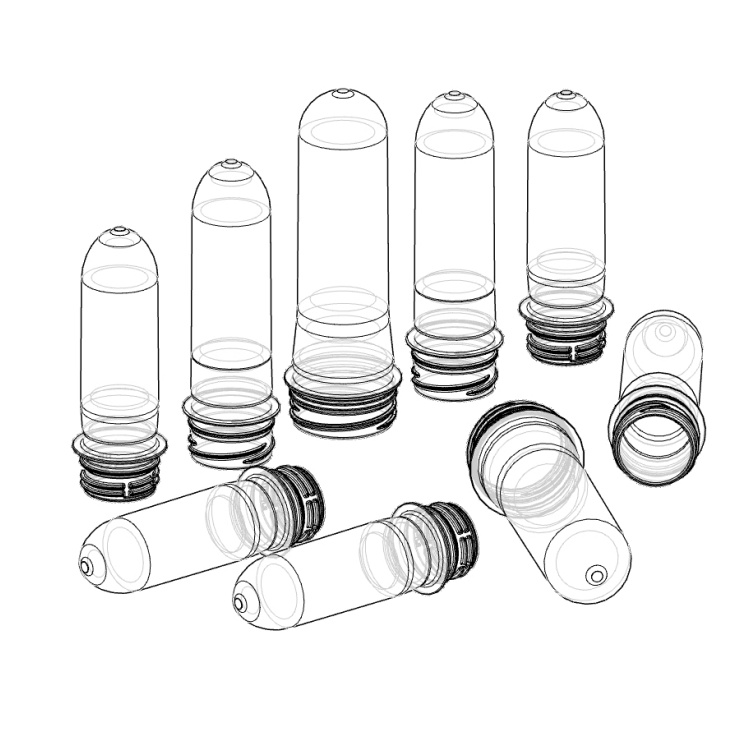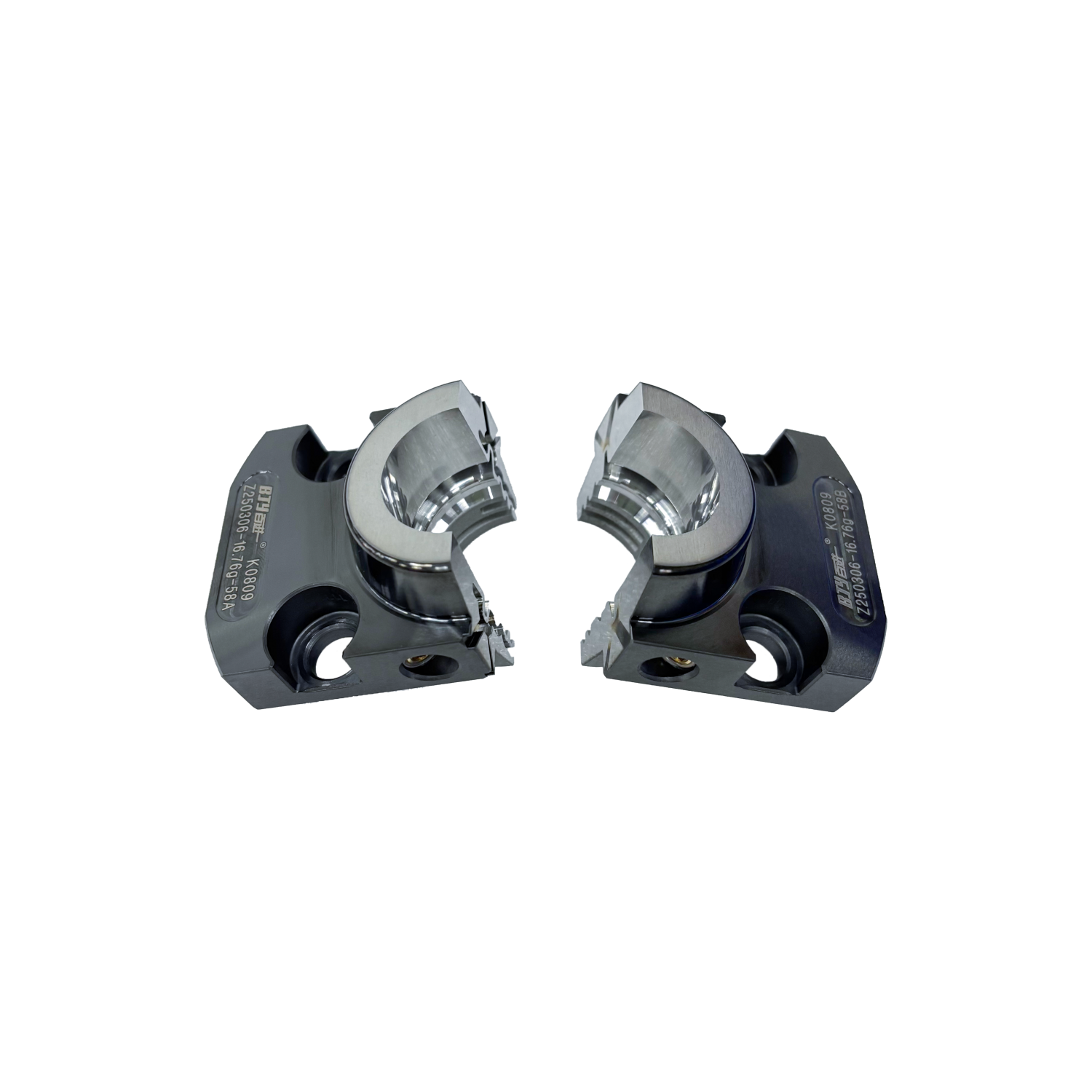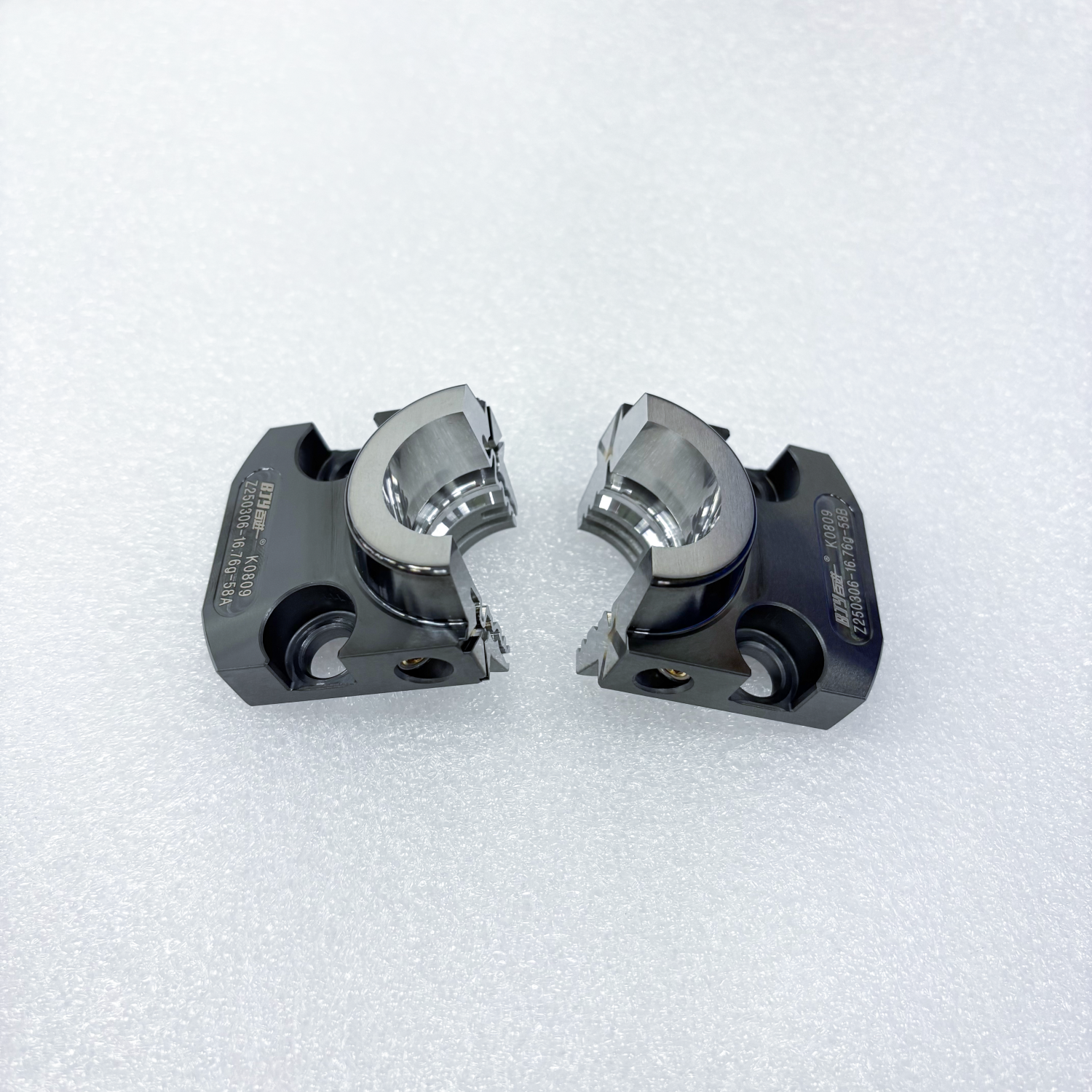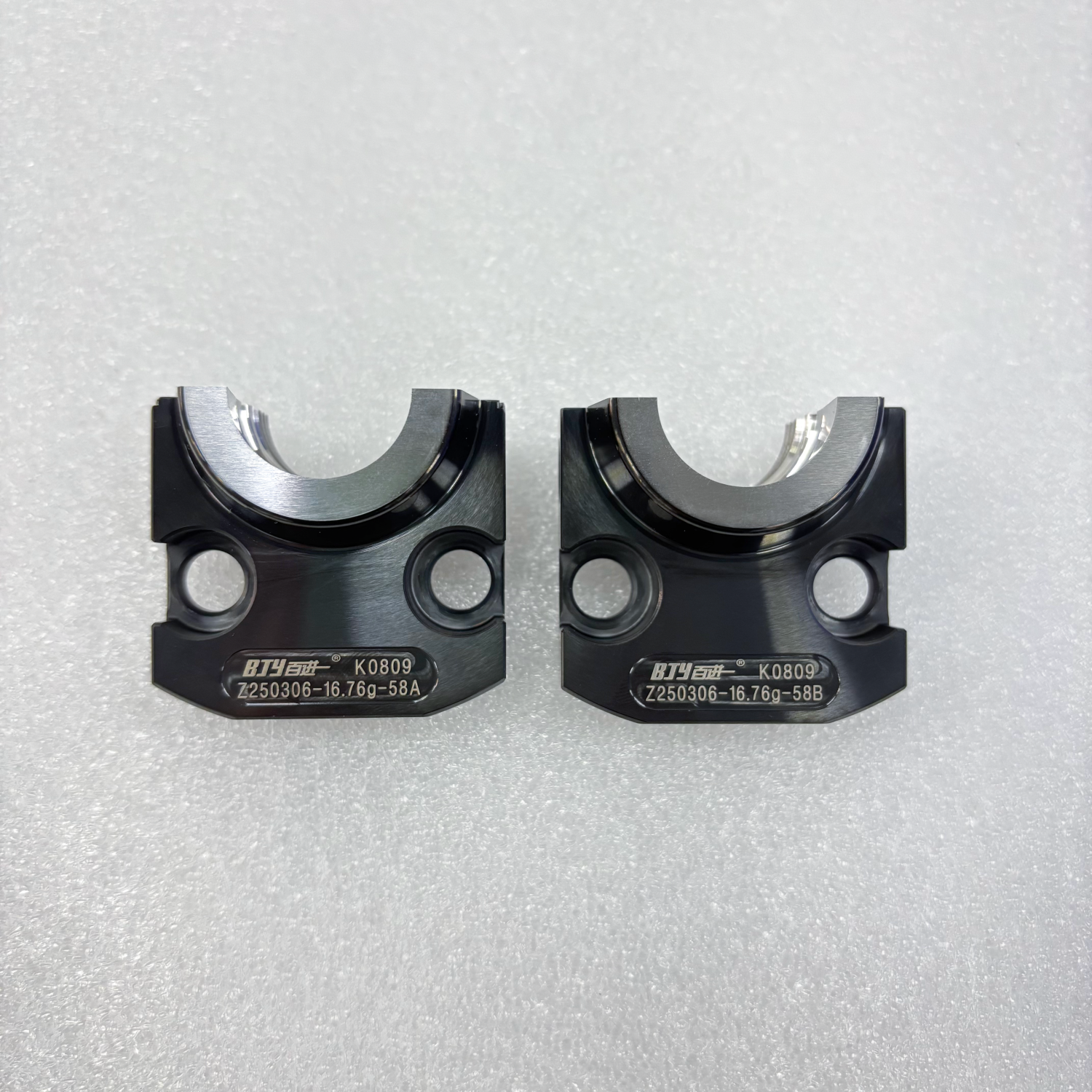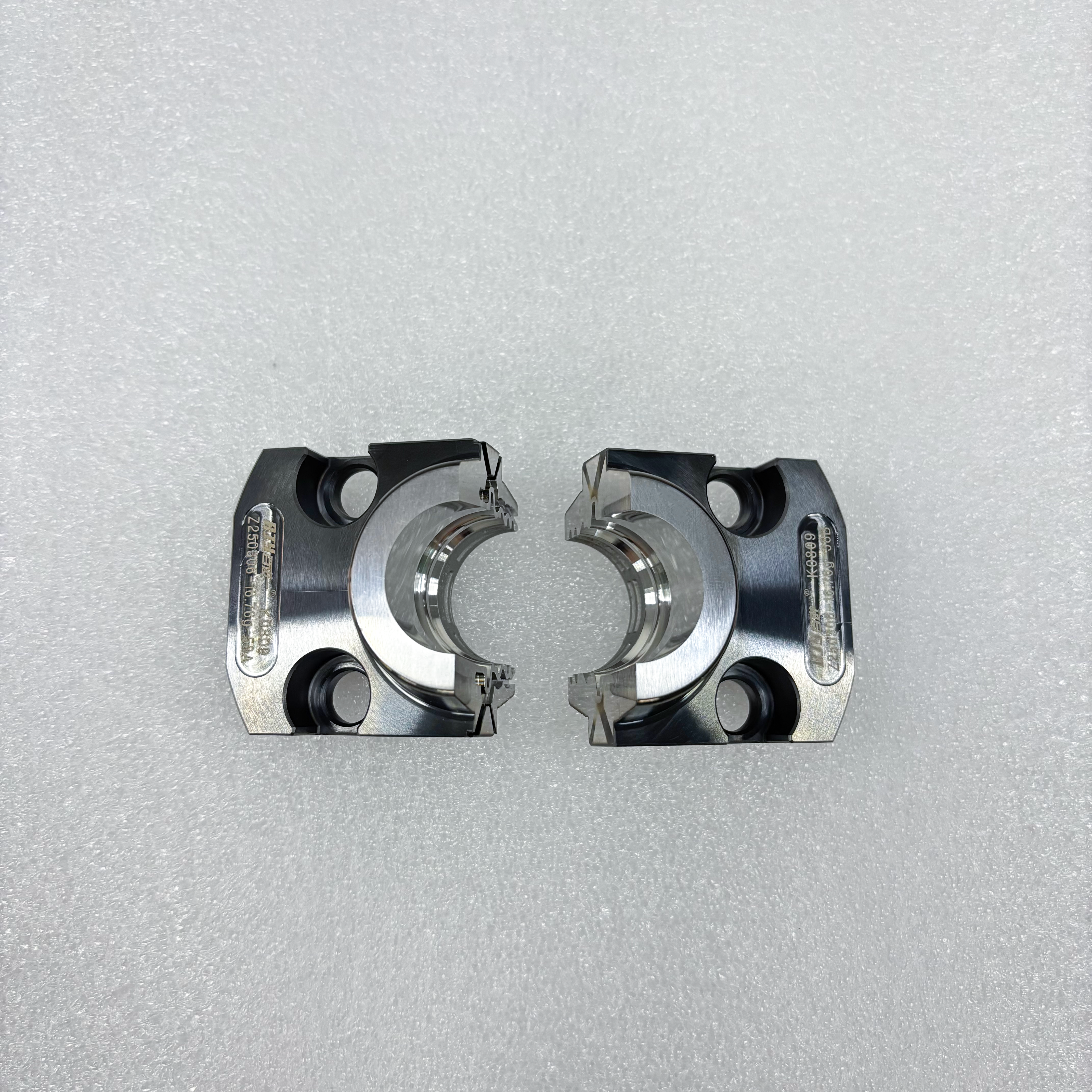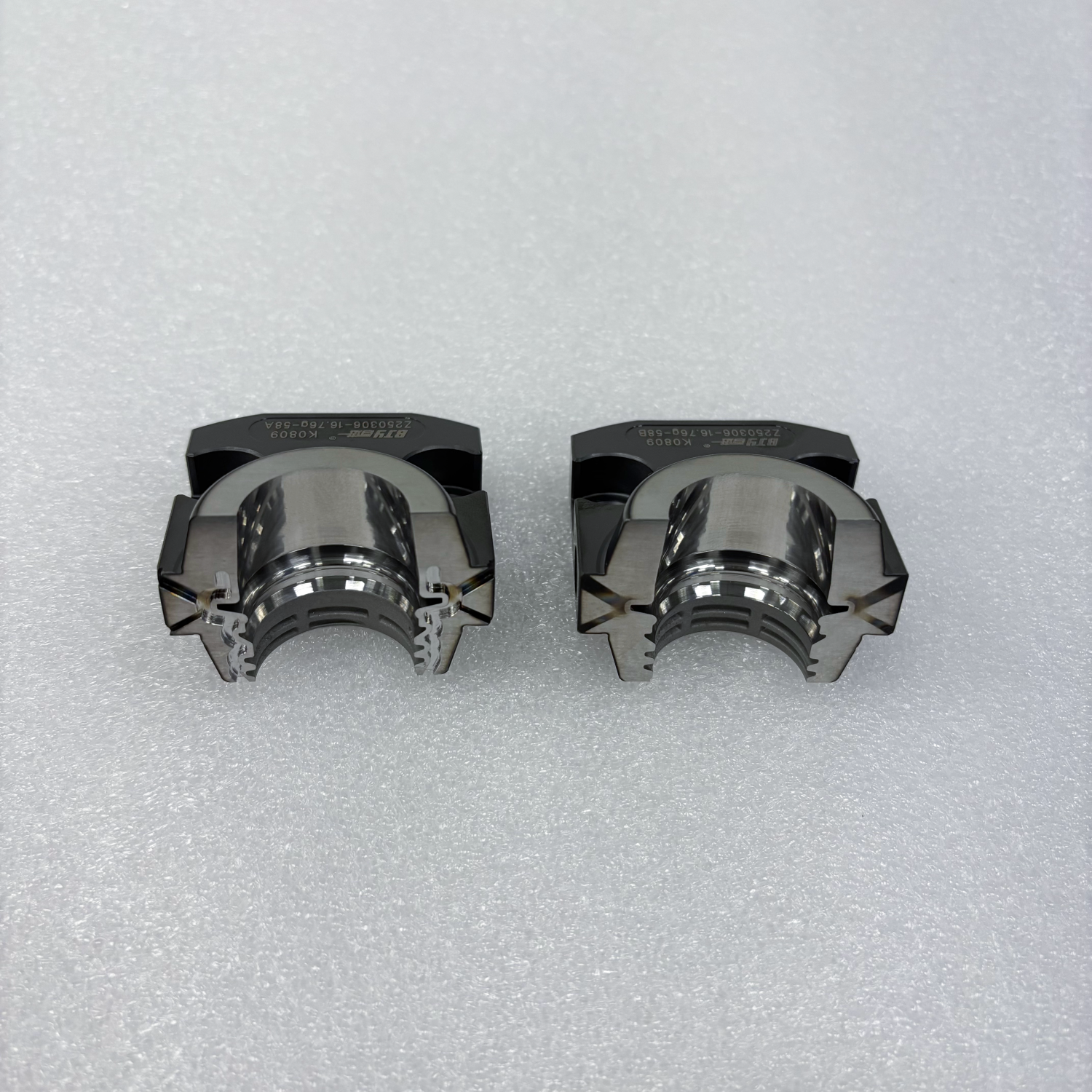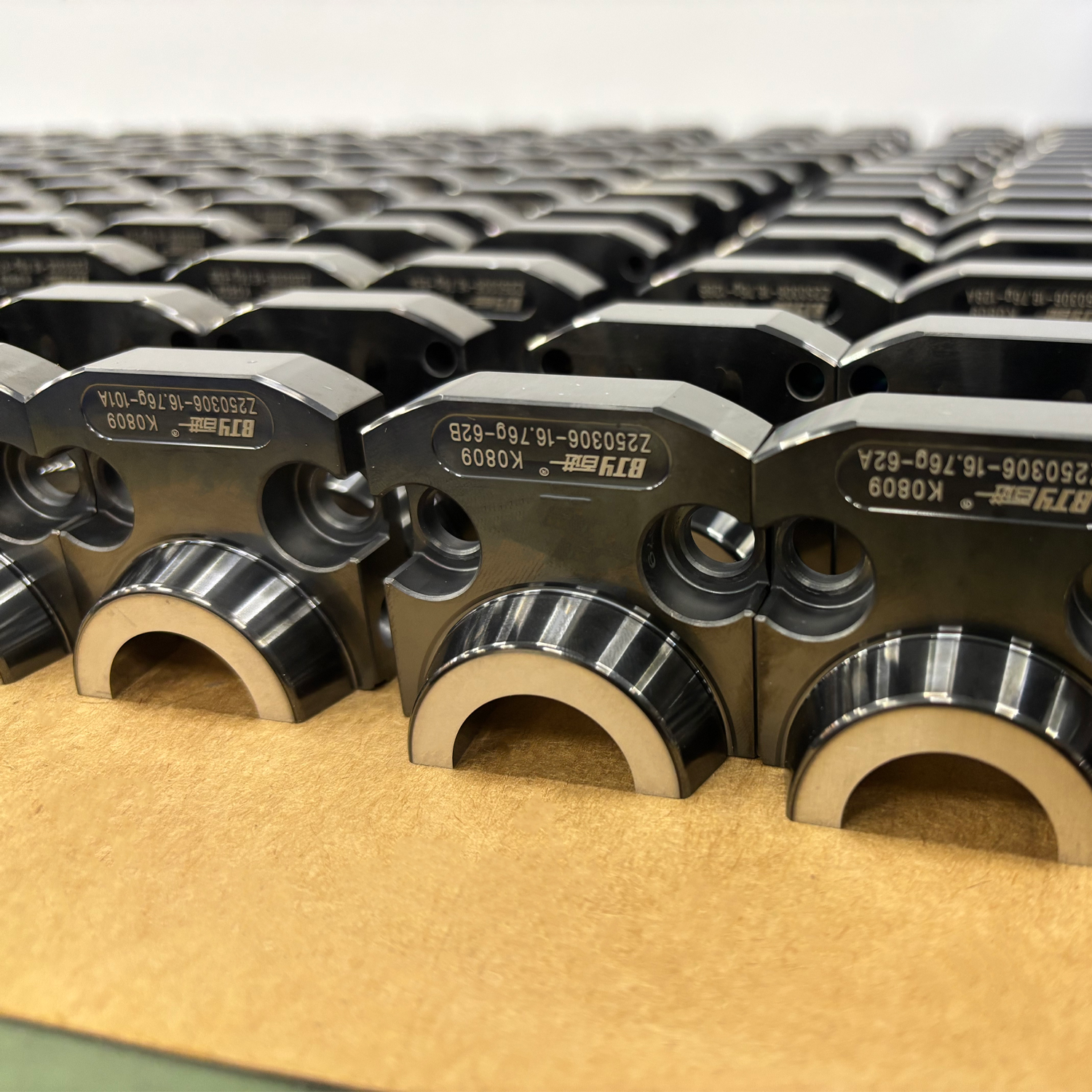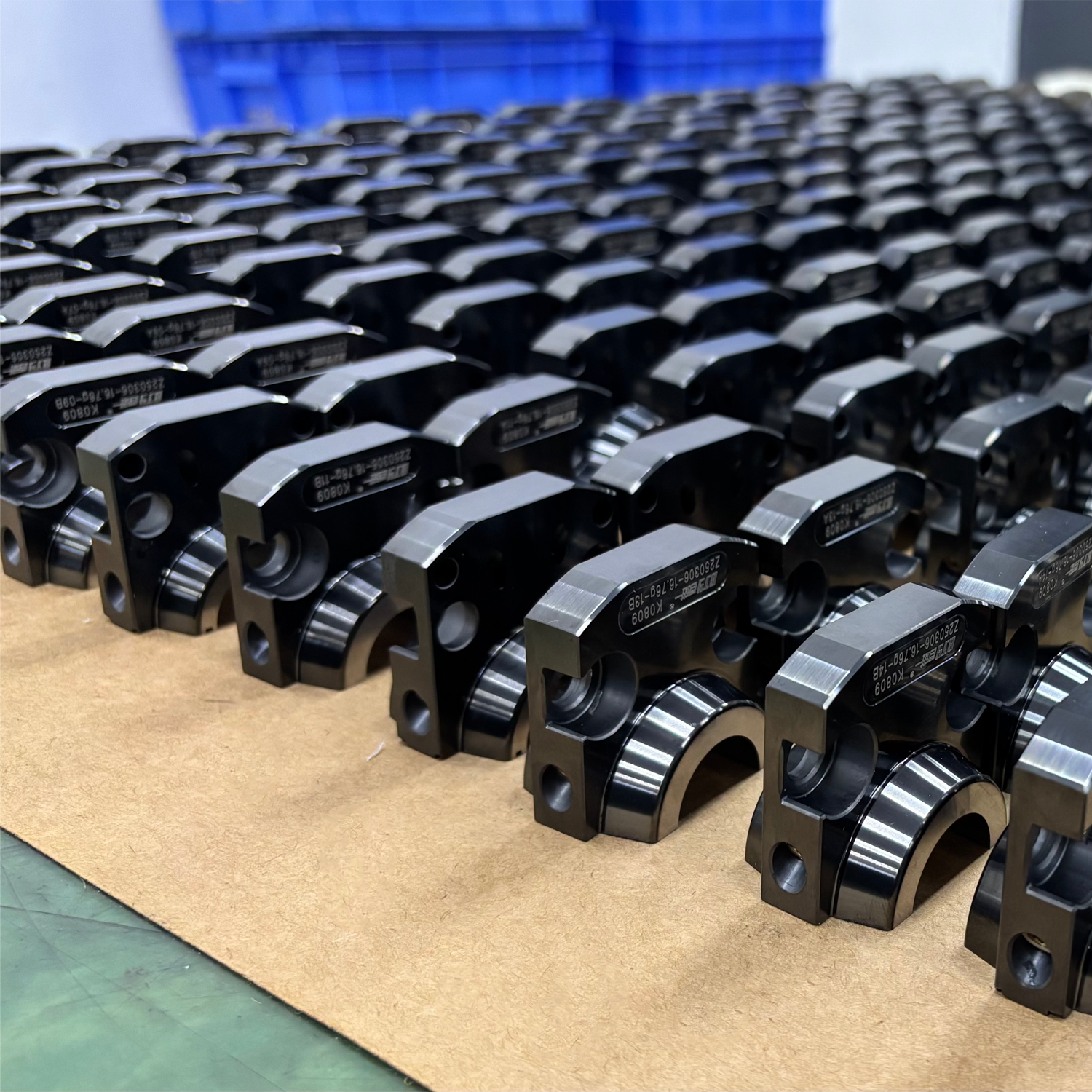Our Sandblasting Process:
♦Preventing Stringing
During ejection, PET may develop stringing defects on smooth end faces due to localized vacuum or surface stretching.
After sandblasting, the surface gains fine micro-textures, reducing contact area and adhesion force, thereby minimizing stringing.
♦Controlling the Gloss of the Support Ring Surface
Certain bottle-neck standards require the support ring or end face to have a matte finish to avoid visual defects or improve grip friction.
Sandblasting the end face can directly impart a matte effect to these areas of the product.
♦Improving Ejection Stability
A sandblasted surface allows air to more easily enter the contact interface during ejection, reducing vacuum suction and improving smoothness of release.
♦Extending Mold Life
In high-frequency contact and friction environments, a sandblasted surface can disperse localized stress, reducing the risk of end-face scratches or pitting.


